Blood Secrets: Chronicles of a Crime Scene Reconstructionist Read online
Page 16
Police first surmised that the weapon might be a tire iron or jack handle, since a transfer blood pattern of two long parallel lines about two inches apart on a corner of the sheet suggested a long, straight blood-covered object had rested against it.
They also suspected the killer was someone Crane knew because there was no sign of forced entry and neighbors reported having heard no arguments or loud noises. The motive? Police weren’t sure, but Crane was famous in certain circles as a womanizer with a penchant for videotaping his conquests, so it seemed plausible that the murder might be linked to his sexual escapades. A camera was perched on a tripod near the murder bed and another lay on the floor, testament to the dead man’s favorite guilty pleasure. Investigators also found a veritable library of Crane’s pornographic exploits. Perhaps the jealous husband or lover of one of the many women he had captured on tape had killed him or hired someone else to do it.
Detectives soon zeroed in on Crane’s friend John Carpenter, a video salesman who often barhopped with the actor and costarred with various women in several of his X-rated home movies. Carpenter claimed to have left Crane outside a coffee shop at two A.M. the night of the murder, which made him one of the last people to see the victim alive. He also made several suspicious moves like leaving town for L.A. the morning Crane’s body was discovered and allegedly showing little surprise when he phoned Crane’s room and heard a police officer answer. Most significant, when investigators searched the rental car he had been driving at the time of Crane’s murder, they found a smear of type B blood—a match with Crane’s—on the passenger’s-side door. Only 10 percent of the population has type B blood.
Several sources close to Crane told police the actor had been complaining about his perpetual sidekick and wanted to ditch him. Witnesses even reported having seen the two arguing at a nightclub a few nights earlier. Had the prospect of losing his star connection and the endless access to willing women that went with it driven Carpenter into a murderous rage? Prosecutors thought so, but Carpenter denied any involvement in or knowledge of the killing, and ultimately there was simply no evidence to link him to it. No one was arrested or charged, and the case remained unsolved.
It was hardly forgotten, though. According to the trial coverage, prosecutors raked police over the coals for what they deemed sloppy evidence handling and failure to secure a crime scene that might have yielded crucial clues in the highest-profile homicide the city could remember. Local papers quipped that if you were looking for a scenic spot to bump someone off and get away with it, Scottsdale was your best bet.
When Richard Romley took over as county attorney in January 1989, he appointed a special review board of fifteen deputies to reexamine evidence from cold cases. Crane’s was at the top of the list. He had the blood sample from Carpenter’s rental car retested the following year, hoping advances in DNA technology might link it to the Crane murder, but results proved inconclusive.
Around the same time, I was lecturing in the area and got a call from the Maricopa County District Attorney’s Office asking me to analyze the blood patterns in the crime scene photos and give an interpretation of what it all meant. I agreed, and the two lead attorneys met me in Phoenix, then later came to Portland to examine the evidence with me. (I later worked with the same office on another high-profile murder involving the execution of nine people, including six Buddhist monks at a nearby temple.)
It was obvious Crane had been killed with a blunt instrument, judging from the medium-velocity blood spatter evident in the photographs of his body, the bedding, and the bed itself. Linear lacerations were evident in the close-ups, though there was no distinctive pattern in the wounds to help us identify the weapon. Blood smeared all over the electrical cord indicated that the strangulation had followed the bludgeoning, and bloody hand transfers on the curtains suggested a killer with a bloody hand had pulled them aside to peer out before leaving. But it took us several weeks to put two and two together and ask the obvious, overlooked question: What’s missing in this picture? The answer: The tripod for the second camera.
Those who knew Crane intimately knew he filmed using cameras on tripods. The missing one could easily have created the head wounds the actor sustained as well as the linear blood transfers on the sheets that were mistaken for marks left by a tire iron or jack handle. It would have been the logical murder weapon, though it was never found.
Not as easy to explain were several other linear blood patterns, some short and some long, as well as a pair of very short, straight lines in blood on Crane’s shoulder. Prosecutors wanted to know if I could determine what had caused the marks and whether they might reveal anything about the killer’s identity.
The answer came from an unlikely source.
As part of my community-policing efforts, I was working with Portland’s David Douglas High School to co-teach and shape the curriculum for a newly created law-related class. David Douglas drew from some of the city’s roughest areas and college enrollment rates among its grads were minuscule compared with those of other area high schools, where the student population was more affluent. Our goal was to expose underprivileged students to professions they might not have considered and to broaden their career horizons. We invited judges, crime writers, court reporters, and cops to work with the teenagers and to tell them about their jobs. The class also had parental permission to help me with blood spatter experiments for cases I was handling.
During the Crane investigation, we set up a camp bed with white sheets and purchased a variety of tripods, then had the students conduct blind experiments with the camera stands closed as well as opened to discover what types of imprints each one made on the sheets when dipped in stage blood. (Keeping the experiments blind meant the students were not allowed to see photos from the Crane murder, which might have influenced their efforts and led them to try deliberately to re-create the mystery marks.)
As luck would have it, two of the prosecutors from the Crane case had flown up from Maricopa County, Arizona, to observe some of the experiments my class was conducting and happened to be on hand when something extraordinary occurred. Among my students was a sixteen-year-old girl named Kim Douglas,* whose ambition was to become manager of the Taco Bell where she worked after school. Toward the end of class, she hurried up to us, an excited expression on her face.
“I think I figured it out!” she said. “Look!” And she slapped the plug of an electrical cord dipped in stage blood against her arm. Sure enough, the prongs made a pair of marks just like the ones on Crane’s shoulder and the cord left a longer linear pattern near it. She repeated the test on several other students’ arms and on the sheets we had brought in for the experiments.
Her solution to the puzzling blood pattern was as brilliant as it was simple. The killer inadvertently slapped the bloodied plug against Crane’s skin as he strangled the man. Why didn’t we see it before? I asked myself. How had all of us “experts” missed something so obvious? I had been staying up half the night conducting experiments in my lab in an attempt to replicate the bizarre blood prints with no success.
Kim Douglas’s discovery is one of the many reasons I encourage input from everyone involved in my cases. I take every source’s ideas seriously and try to give them equal weight. You would be surprised at how often it is not a scientist or a seasoned cop but a senior on internship or an office assistant who provides the fresh, out-of-the-box thinking that cracks the case.
The DAs were duly impressed and asked all the students to put their initials on the sheets with the tripod and the electrical plug marks, just as professional evidence collectors would do. Then they photographed the work and took the sheets back with them to Arizona to submit into evidence.
Though the students at David Douglas had no idea whose case they were working on, they knew they had solved a real mystery in a real murder. The triumph on their faces was exhilarating to see. That breakthrough was one of many reasons that a remarkable majority of the students in the class went on to att
end college. Kim Douglas gave up on the fast-food industry and set her sights on law school instead.
The plug pattern and the tripod prints put two mysteries to rest, but they hardly revealed the killer’s identity. Again, the Crane case stalled. Then, in 1992, a shred of evidence came to light that gave Romley new hope. In examining an old police photograph of the door of Carpenter’s rental car, his deputies spied a dark, irregularly shaped blotch, about one-sixteenth of an inch in size. The spot looked just like the spots of brain tissue on the bloody sheets under Crane’s body. It was enough to reopen the case.
Evidence collection procedures were very different in the 1970s, however, and nobody had paid any attention to the speck back then. The tissue sample had not been preserved, so there was no way to test it and confirm or deny the theory that it was brain matter.
Undaunted, Romley brought charges of first-degree murder against Carpenter, and he was arrested in Los Angeles on June 1, 1992, fourteen years after Crane’s death. At that time he was also facing charges of child molestation, which delayed his extradition to Arizona. He pleaded no contest and got three months’ probation. The Crane case went to trial in 1994.
I was called to testify about my theory on the murder weapon and to explain the positions the victim and the murderer would have been in when the attack occurred. The evidence suggested that Crane was asleep under the covers when his assailant snuck up on him, bludgeoned him, and then strangled him.
Not surprisingly, the case hinged on the photograph of the mysterious speck in the rental car. Was it tissue? If so, was it Crane’s? Was it proof that Carpenter played a role in the murder? After two days of deliberations, the jury said no. Carpenter was acquitted owing to lack of evidence. He died in 1998, still maintaining his innocence in the murder of Bob Crane.
Case Study: Robert Blake and the In Cold Blood Question
A few years later, I was asked to consult on another murder involving a once well-known television name that, like Crane’s, had faded from the limelight. This time, though, the celebrity was not the victim, but the accused.
On the evening of May 4, 2001, Robert Blake and Bonny Lee Bakley, Blake’s wife of about seven months, went to dinner at Blake’s longtime favorite restaurant—Vitello’s, in Studio City, California. The onetime Baretta star had been a regular for so many years that the popular Italian eatery had named a pasta dish in his honor. Normally he used Vitello’s valet parking service, but almost nothing about the night in question could be described as normal for the sixty-seven-year-old actor. Breaking his routine, he parked his black Dodge Stealth down the street behind a construction Dumpster under a burned-out streetlight and walked a block and a half to Vitello’s with Bakley, past plenty of empty curbside parking spaces closer to the restaurant.
Around nine-thirty P.M., the couple left Vitello’s and walked back to the Stealth. According to Blake’s version of events, he suddenly realized he had left the handgun he carried for his wife’s protection in the restaurant booth. After assuring Bakley he would be back shortly, he hurried off to retrieve it. When he returned, he found Bakley slumped in the passenger seat, bleeding copiously from two gunshot wounds—one to her right cheek and one to her right shoulder. Blake raced to the nearest house and banged frantically on the door. This being Studio City, the home belonged to someone in show business—filmmaker Sean Stanek. When Stanek answered, a shaking Blake dragged him to the car, where Bakley was barely breathing. While Stanek called 911 on his cell phone and tried to administer first aid, Blake ran back to Vitello’s for more help. Bakley died before he returned. She was forty-four years old.
Anyone can panic during an emergency, but a number of Blake’s actions raised suspicions among the investigating detectives. The actor told them he had recently started carrying a gun because he feared someone was stalking his wife. If so, why park in a secluded area near a construction site? Why leave her alone in the car with the windows down? The temperature was a chilly fifty-seven degrees, and Bakley was wearing only a lightweight nylon outfit, but Blake took his keys with him so she had no way to close the windows or turn on the car’s heater. Blake said he chose the inconspicuous spot assuming that keeping Bakley out of sight would protect her but he wasn’t thinking straight when he left her in the car.
Why make reservations and introduce Bakley as his wife that night when he had been showing up for years without reservations and for months with the woman without introducing her? Why hadn’t anyone noticed Blake returning to get his gun? Plenty of people remembered him coming in distraught and shouting that his wife had been shot—then drinking two glasses of water before returning to the scene of the shooting.
And there was more: Blake’s table had been bussed two minutes after he left—before he and Bakley would have reached the car and noticed the firearm was missing—and none of the busboys had noticed a handgun lying on the seat. Another Vitello’s patron reported having seen the actor in the men’s room earlier, vomiting, tugging his hair, and mumbling—though that’s not so surprising considering that Blake had long been in the habit of throwing up his meals to keep his weight in check, according to those who knew him well. Blake hardly allayed police skepticism about his innocence when he refused to take a polygraph test that night, claiming he was too upset and afraid the dreams he had been having about killing his wife would produce an inaccurate result.
Then again, odds were good that Blake wasn’t the only man having dreams about killing Bonny Lee Bakley. She was far from the most sympathetic of victims. As LAPD detectives soon discovered, the woman had a long and lurid history of bilking lonely-hearted men out of money through mail-order scams that involved sending them nude photos (usually of other women) along with promises of a future romance. She had also been arrested for credit card fraud, passing bad checks, and drug possession.
When it came to famous men, she was an aging groupie. She spent several years in Memphis trailing Jerry Lee Lewis in the early 1990s, then sued him for paternity of her third child—a daughter she named Jeri Lee Lewis. Paternity was never proven, though Lewis paid her a settlement. After that, Bakley headed to California, where she had a liaison with Christian Brando, son of Marlon Brando. Next she met Blake, had a fling with him, got pregnant, refused his pleas to abort, and finally talked him into marrying her for the sake of the child, Rose, born in June 2000. By all accounts, Blake was smitten with Rose but repulsed by her mother and the lifestyle she led. He let Bakley live in a cottage on his ramshackle Mata Hari Ranch in Studio City but got a court order barring her from doing anything illegal there.
She ignored it. Among Bakley’s belongings, police found a notebook listing Bakley’s scam victims, the pseudonyms she used when she wrote to each of them, and the amounts of money they had mailed her. Another notebook contained a list of stars and other rich men she had targeted for romance. Next to their names were notes about their worth and other personal details like the names of their mothers. Nearby was a stash of letters the dead woman had written bragging about her erotic adventures and describing her fondness for everything from sex toys to sadomasochism to meeting strangers in motels for trysts—claims her own friends substantiated. They had warned her to be careful, they said, but Bakley was cavalier. She joked that one day her dangerous games would probably catch up to her, but she didn’t stop.
Could another man have been harboring a murderous grudge against Bakley? Possibly. Blake’s bodyguard, Earle Caldwell, told police a menacing stranger with a pickup truck and a blond buzz cut had been staking out Mata Hari Ranch for weeks before Bakley’s murder.
Police never tracked the man down, but they did unearth the murder weapon—a World War II–era Walther PPK handgun with the serial number partly filed off—in the Dumpster where the Stealth was parked. Attempts to trace it or link it to Blake were unsuccessful.
Still, Robert Blake remained suspect number one. On April 18, 2002, the actor who had once starred as a killer in In Cold Blood was arrested. A few days later, he was formally ch
arged with murder, solicitation of murder, and conspiracy to commit murder. Caldwell was arrested, too, and charged with conspiracy to commit murder.
That was when prosecutor Shellie Samuels called my office and asked me to examine the evidence. She and two colleagues flew to Portland with Blake’s jeans, boots, socks, belt, and black T-shirt. I examined each of them using my normal protocol. Everyone in the lab dons fresh gloves, then we spread out clean butcher paper for the first piece of evidence, examine it inch by inch, photograph every section of it, make notes on any unusual characteristics that might relate to the crime, and—in Blake’s case—test it with Luminol for traces of blood spatter. We then reseal the item, sterilize each piece of equipment used, dispose of the old butcher paper, and change our gloves to eliminate the possibility of cross-contamination. We lay out fresh paper on the examining table for the next item and start the process over again.
Blake’s garments revealed no traces of blood. But would Bakley’s killer, whether it was Robert Blake or anyone else, have gotten bloody blowback on his clothes? Probably not. Here’s why: I went to Los Angeles and examined the blood-covered Dodge Stealth, which had been submitted into evidence there, and measurements showed that when Bakley was shot the blowback traveled only about eight and a half inches. Remember, high-velocity mist is very fine and light, so it never flies farther than four feet from the bullet’s point of entry, even when a high-caliber weapon creates the wound.
Next we traced the trajectory of each bullet based on Bakley’s injuries. We started by working backward from the termination point of the bullet lodged in the left side of her head to its entry point in her body—a hole low on the right side of her jaw. Then we did the same with the shoulder wound. Both bullets remained lodged in Bakley’s body, and both would have been fatal. To understand the path the bullets took, we envisioned an imaginary steel rod running from each termination point back through each entry point. If Bakley had been seated in a normal upright position, the rods would have run downward through the car door to a point of origin on the pavement.

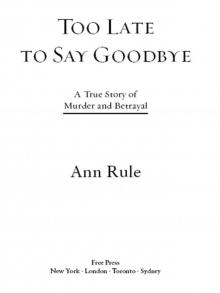 Too Late to Say Goodbye: A True Story of Murder and Betrayal
Too Late to Say Goodbye: A True Story of Murder and Betrayal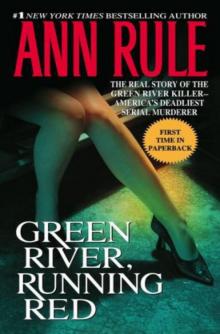 Green River, Running Red
Green River, Running Red Bitter Harvest
Bitter Harvest Dead by Sunset: Perfect Husband, Perfect Killer?
Dead by Sunset: Perfect Husband, Perfect Killer?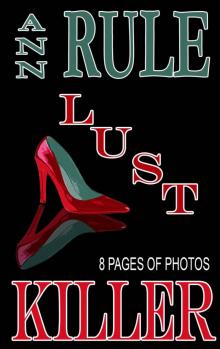 Lust Killer
Lust Killer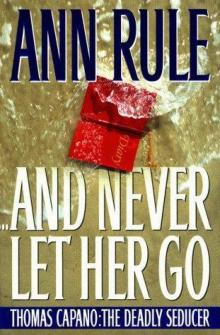 And Never Let Her Go: Thomas Capano: The Deadly Seducer
And Never Let Her Go: Thomas Capano: The Deadly Seducer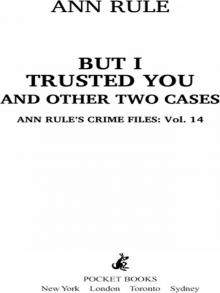 But I Trusted You and Other True Cases
But I Trusted You and Other True Cases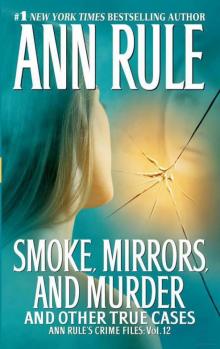 Smoke, Mirrors, and Murder and Other True Cases
Smoke, Mirrors, and Murder and Other True Cases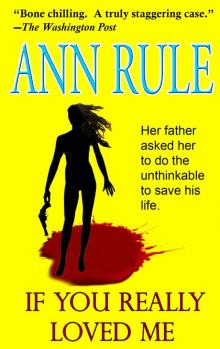 If You Really Loved Me
If You Really Loved Me Kiss Me, Kill Me and Other True Cases
Kiss Me, Kill Me and Other True Cases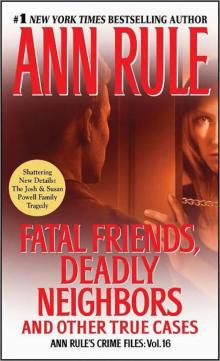 Fatal Friends, Deadly Neighbors and Other True Cases
Fatal Friends, Deadly Neighbors and Other True Cases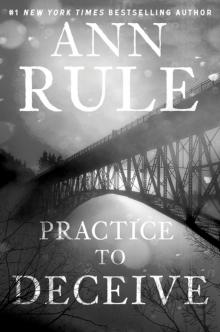 Practice to Deceive
Practice to Deceive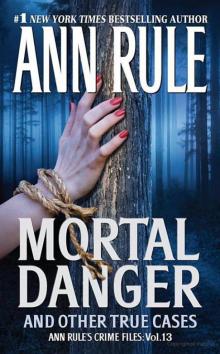 Mortal Danger and Other True Cases
Mortal Danger and Other True Cases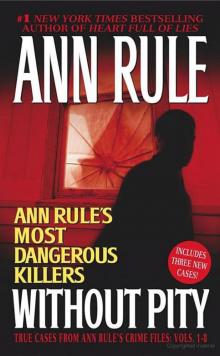 Without Pity: Ann Rule's Most Dangerous Killers
Without Pity: Ann Rule's Most Dangerous Killers Everything She Ever Wanted
Everything She Ever Wanted A Fever in the Heart and Other True Cases
A Fever in the Heart and Other True Cases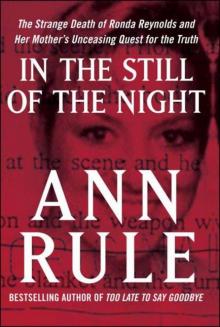 In the Still of the Night
In the Still of the Night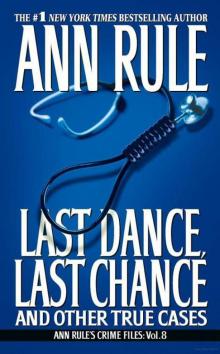 LAST DANCE, LAST CHANCE - and Other True Cases
LAST DANCE, LAST CHANCE - and Other True Cases A Rage to Kill
A Rage to Kill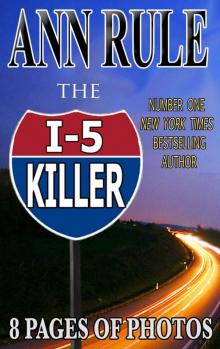 The I-5 Killer
The I-5 Killer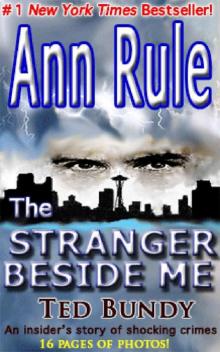 The Stranger Beside Me
The Stranger Beside Me Everything She Ever Wanted: A True Story of Obsessive Love, Murder, and Betrayal
Everything She Ever Wanted: A True Story of Obsessive Love, Murder, and Betrayal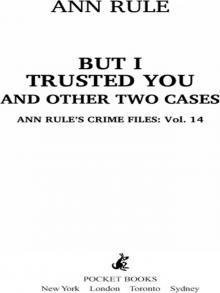 But I Trusted You
But I Trusted You Without Pity
Without Pity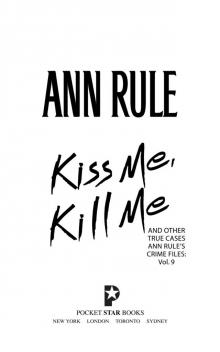 Kiss Me, Kill Me
Kiss Me, Kill Me Too Late to Say Goodbye
Too Late to Say Goodbye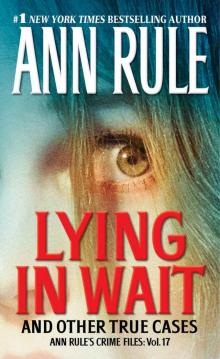 Lying in Wait
Lying in Wait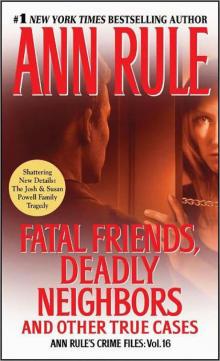 Fatal Friends, Deadly Neighbors
Fatal Friends, Deadly Neighbors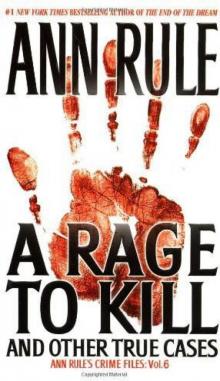 A Rage to Kill: And Other True Cases
A Rage to Kill: And Other True Cases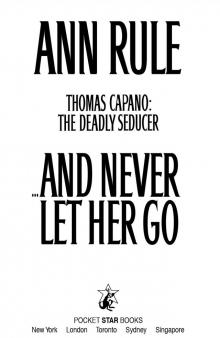 And Never Let Her Go
And Never Let Her Go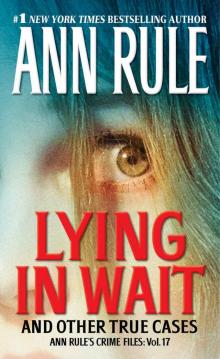 Lying in Wait Ann Rule's Crime Files Vol.17
Lying in Wait Ann Rule's Crime Files Vol.17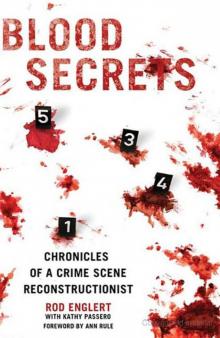 Blood Secrets: Chronicles of a Crime Scene Reconstructionist
Blood Secrets: Chronicles of a Crime Scene Reconstructionist No Regrets
No Regrets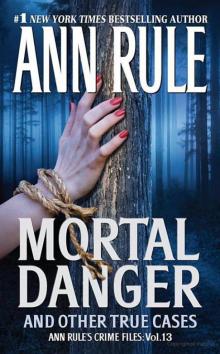 Mortal Danger
Mortal Danger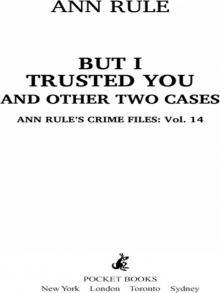 But I Trusted You: Ann Rule's Crime Files #14
But I Trusted You: Ann Rule's Crime Files #14 Empty Promises
Empty Promises Dead by Sunset
Dead by Sunset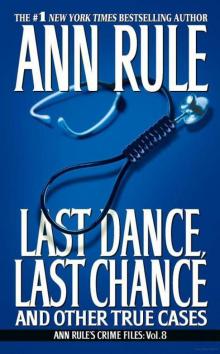 Last Dance, Last Chance
Last Dance, Last Chance Don't Look Behind You
Don't Look Behind You